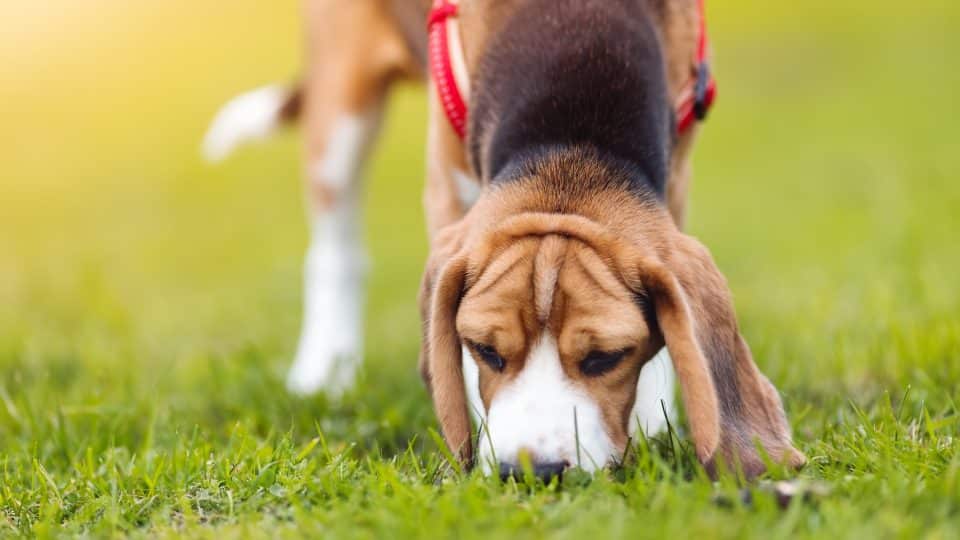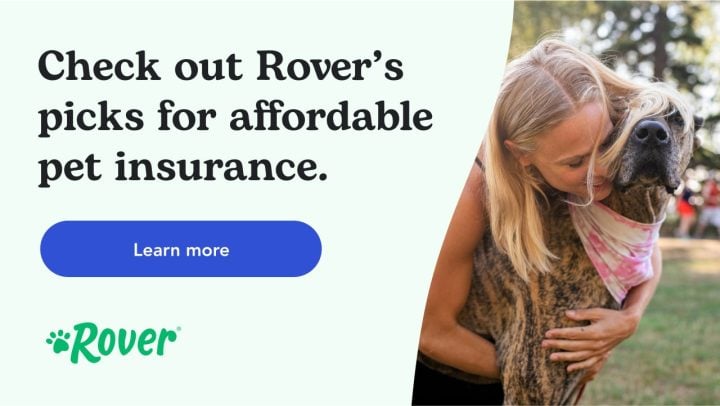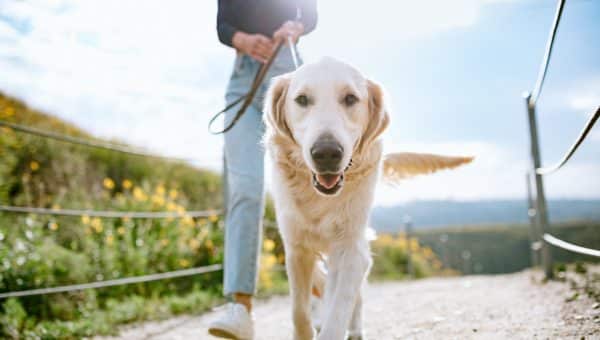- Not a substitute for professional veterinary help.
Canine parvovirus, or parvo (CPV), is a highly contagious disease that can damage your dog’s digestive system. It’s caused by a virus called canine parvovirus type 2 (CPV). Most commonly, dogs will get parvo from sniffing, licking, walking through, or even eating infected poop. Luckily, parvo is highly treatable and preventable.
Below, we’ll discuss how dogs get parvo, the symptoms, and how to prevent it in the first place.
How & Where Do Dogs Get Parvovirus?
Dogs, being scent-driven creatures, like to smell any poop they come across to see who is in their territory. A good sniff can easily inhale CPV off the stool. Young puppies, who are willing to taste anything, may lick or even eat the poop. Because the virus is so contagious, dogs can catch parvo anywhere: in kennels, dog parks, yards, and, yes, potentially your home.
Additionally, stool doesn’t have to be fresh to be infected. If it’s in a dark, damp area, the virus can last months or even years. Even if your dog doesn’t sniff or lick infected feces, they may unknowingly walk through it. Their dirty paws can then track the virus indoors, across your floor, and up onto your couch. Virus-contaminated objects are called fomites, and they can infect any dog in the house who sniffs them.
Unfortunately, CPV is a very tough virus and can survive indoors at room temperature for two months. The coating around the virus’ DNA is made of proteins rather than lipids (fats), making them resistant to most pet-safe household cleaners.
Can dogs pass parvo to cats or humans?
Any household cat can also get infected with the most recent variant of CPV. But if they’re vaccinated against feline distemper, they should be safe.
Luckily, dogs don’t pass parvo to us. However, you probably don’t like the idea of feces-contaminated furniture.
What Are the Risk Factors for Parvo?
While any dog can be exposed to parvo, some are much more likely to get sick from the virus. The main risk factors for parvo are:
1. Age
“Puppies are most at risk of getting the disease within the first few months of life due to their vaccination status and strength of their immune system,” says Dr. Ari Aycock-Williams, a senior clinical veterinarian at the University of Southern California.
For the first few weeks of a puppy’s life, antibodies in their mother’s milk protect them from CPV. But these antibodies wane over time, providing incomplete protection. This is why, before your puppy completes all their vaccinations at 16 weeks, you need to be careful where you let them outside.
Even among unvaccinated dogs, parvo is much deadlier for puppies than adults. That’s because the virus can quickly spread through their tiny bodies and attack their heart.
2. Breed
Research suggests some dogs have a genetic susceptibility to canine parvovirus. The breeds most vulnerable to parvo include the following.
- American Pit Bull Terriers
- Doberman Pinschers
- English Springer Spaniels
- German Shepherds
- Rottweilers
- Yorkshire Terrier
3. Environment
Kennels, dog shelters, and other crowded places are ideal breeding grounds for CPV. Due to limited space, it can be difficult to fully quarantine a sick dog. Any virus they shed can quickly find a number of suitable hosts nearby and spread through the population.
4. Immune status
Immunocompromised dogs are more vulnerable to parvo. If your dog’s body is already fighting off bacteria or other viruses, it will have fewer resources to address the threat of CPV. Stress, such as from weaning or moving homes, can also be taxing on a puppy’s immune system.
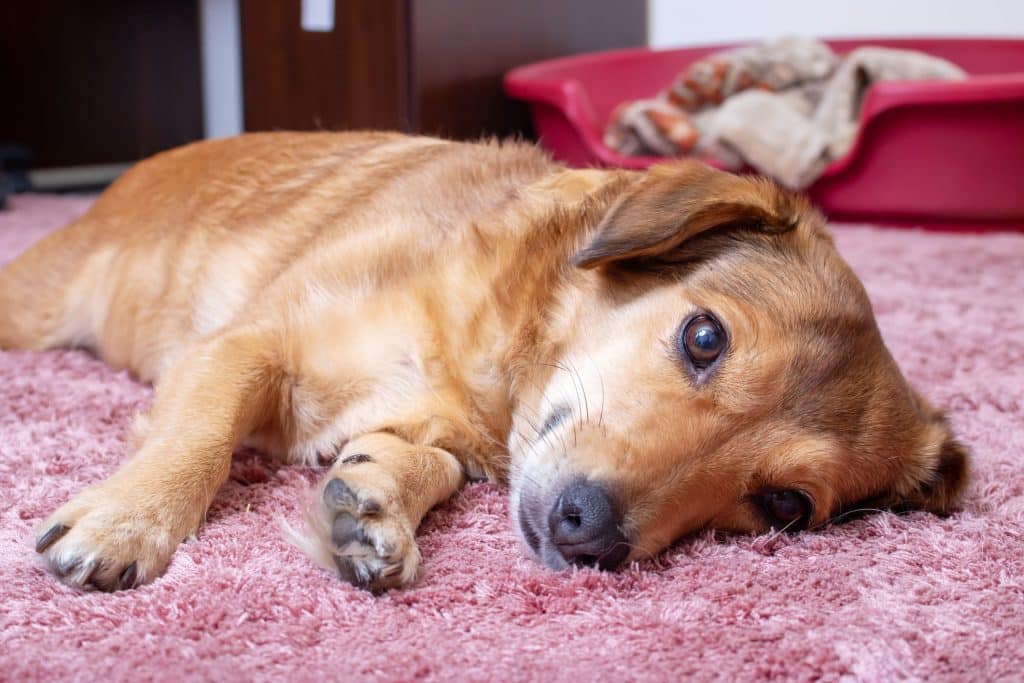
iStock/Vera Aksionava
What Are the Symptoms of Parvovirus?
After the virus gets into your dog’s system, it usually incubates for 5 to 7 days. So if your dog got exposed on a Monday, the virus will spend the week multiplying, and by the weekend, it will have spread enough to get a reaction out of your dog’s body. Below, we’ll break down the early and late symptoms of parvo to look out for.
Early Symptoms
At first, your dog may seem vaguely unwell. Early symptoms include:
- Fever
- Refusal to eat
- Lethargy
Later Symptoms
Around 1 to 2 days after symptoms first appear, your dog’s condition may take a turn for the worse. Your dog may develop symptoms such as:
- Bloody diarrhea
- Vomiting
- Severe abdominal pain
- Racing pulse
- Cold body temperature (hypothermia)
Left untreated, your dog can go into septic shock and potentially die.
It’s important to remember that even after your dog recovers and stops showing symptoms, they can still be contagious. They will shed the virus in their feces for around ten days after recovery. Only fully vaccinated puppies and adults are truly safe around them during this period.
How to Prevent Parvo
Parvo can have long-term effects on your dog’s health. For example, dogs who survive parvo are five times more likely to have chronic gastrointestinal diseases such as irritable bowel syndrome. So, the best way to protect your dog’s health is to avoid getting parvo in the first place. There are two main ways to prevent parvo:
Keep your puppy protected
If you have a puppy or vulnerable adult dog, you may want to limit their social circles. Rather than taking them to public dog parks, you may want to schedule drop-ins with a sitter to keep your dog happy or arrange one-on-one visits with a puppy playmate you know is healthy.
Additionally, you can protect your dog by cleaning your house after any exposure. While CPV is tough, it isn’t invincible. You can disinfect contaminated areas with these solutions:
- AHP (Accelerated Hydrogen Peroxide): 1 part AHP to 32 parts water
- Bleach (5% Sodium Hypochlorite): 1 part bleach to 32 parts water
- Potassium Peroxymonosulfate: 1% dilution
For any of these disinfectants to work, they need at least 10 minutes of contact time with the contaminated surface.
Adhere to a vaccination schedule
“Vaccines for canine parvovirus are highly effective, producing nearly 100% immunity after the full course,” says Dr. Colleen Lambo, a veterinarian at The Vets. “They significantly reduce the risk of severe illness, and breakthrough cases are rare.”
She adds that if your dog does get a breakthrough case, their symptoms will likely be milder. Typically the vaccine schedule for canine parvovirus starts when a dog is 6 to 8 weeks old. They’ll get additional shots every 2 to 4 weeks until they are 16 weeks old. Once your dog is done with the full course, they’ll need a booster shot every three years.
Thankfully, this full course covers all three known CPV variants.
How Vets Treat Parvovirus
If your puppy is vomiting or has diarrhea, you need to take them to the vet right away. A professional can determine if their symptoms are due to parvo or something else, like ingesting a toxic substance.
Thankfully, Dr. Aycock-Williams says around 80 to 95% of dogs survive parvo with aggressive early treatment. If they have parvo, your dog will likely need to be hospitalized so the vet can closely monitor their health. Some treatments may include:
- Fluid and electrolyte therapy: Your vet may give your dog fluids through an IV to prevent dehydration.
- Nutritional support: Dogs who can’t eat may need a feeding tube until they can stop vomiting for at least 12-24 hours.
- Antiemetic therapy: These medications help your dog stop vomiting so they can take food and medication.
- Antibiotic therapy: Antibiotics help if your dog’s gut bacteria have leaked through their epithelium.
On average, canine parvovirus treatment costs between $1,000 to $2,000. Luckily, comprehensive pet insurance can help reduce this cost for pet parents.
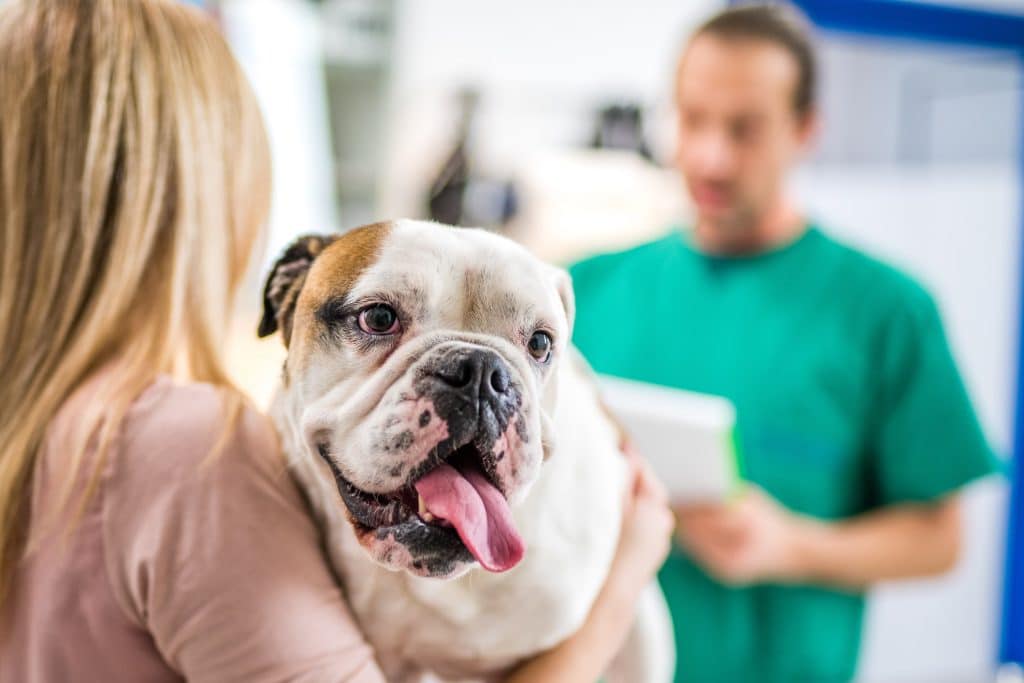
iStock/simonkr
Are Dogs Immune to Parvo Once They Have It?
While most dogs who recover from parvo develop long-term immunity, ‘most’ does not mean ‘all.’ “It is generally recommended to continue vaccinating a dog after they have recovered from parvovirus,” Dr. Lambo cautions. She adds that vaccinations are key to boosting and maintaining your dog’s immune response.
If an adult dog develops a second infection, Dr. Aycock-Williams says they can be contagious even if they don’t get sick. So, even if an unvaccinated dog has had parvo in the past, you still need to be careful introducing them to puppies or vulnerable adults.
How to Clean Your Home After Your Dog Has Parvo
When one dog in a multi-pet household has parvo, you will need to isolate them as much as possible so they don’t get your other pets sick.
- Clean your pup. Bathe every pet thoroughly with regular shampoo to wash away any virus on their fur.
- Dispose of stool. Pick a pooper scooper and remove as much contaminated stool from your yard as you can.
- Spray vomit or diarrhea in your yard away with a water hose. It’s hard to fully disinfect a yard, but any poop you clean up means less virus your dog can potentially track into the house. Just to be safe, experts recommend keeping unvaccinated dogs out of your yard for 6 to 12 months.
- Sanitize indoor areas. Thankfully, indoor areas are easier to sanitize, but different cleaners work best on different surfaces. For carpets, fabric furniture, granite, and unvarnished wood, AHP or potassium peroxymonosulfate disinfectants do the trick. You can put them in a steam cleaner to disinfect your couches and carpets or use them plain on your unvarnished floors.
- Wash your dog’s bedding and toys with disinfectant and bleach. However, not all your dog’s belongings may be salvageable. If an object is thoroughly stained or still smells after disinfection, you may be better off replacing it.
- Soak your dog’s food and water bowls. Since your dog regularly eats and drinks out of these bowls, it’s important to rinse the disinfectant thoroughly. If your dog’s bowl has scratches or teeth marks, you can’t sanitize them, and you’ll need to replace the bowl.
Takeaway
Canine parvovirus is a serious, highly-transferrable illness that affects puppies and older dogs alike. Since the virus can be fatal, it’s key to keep up on your dogs’ vaccinations and implement parvo prevention best practices. If your dog does get parvo, see a vet as soon as possible to start treatment.
